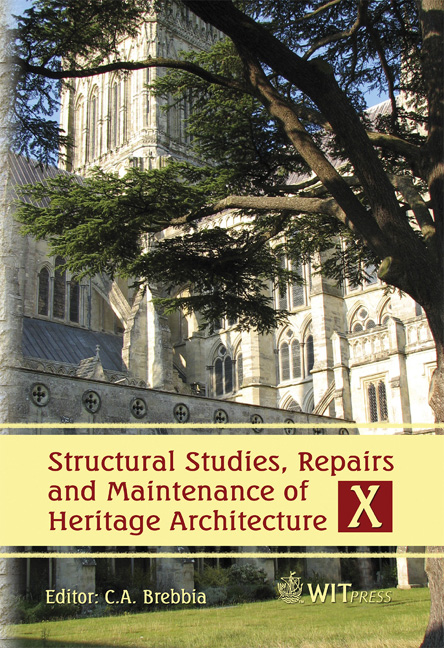Seismic Behavior Of A Thatched House At Minehama Village In Akita, Japan
Price
Free (open access)
Transaction
Volume
95
Pages
7
Published
2007
Size
1,916 kb
Paper DOI
10.2495/STR070621
Copyright
WIT Press
Author(s)
K. Ueta, C. Cuadra, K. Tokeshi & M. B. Karkee
Abstract
Old traditional wooden constructions in Japan are declared as buildings of cultural interest and therefore efforts are made to preserve these kinds of buildings. In this study, a traditional wooden structure is investigated to determine its dynamic characteristics and evaluate its seismic performance. The structure corresponds to a framed wooden construction with traditional connections between columns and beams. In general, nails are not used in these joints, and instead, the beam is narrowed at each end to be inserted into a hole cut in the column. This joint is known as a mortise-tenon joint. The end narrowed member of the beam is called the tenon, and the hole in the column is called the mortise. The joints are wedged to lock them in place. The modeling of this joint becomes a challenge since it does not correspond to a rigid joint of a common frame or to a hinge. The stiffness of this joint varies from the hinge to the perfect rigid joint. Therefore, the model used in this study is called a half rigid joint where the moment rotation relationship is specified for each beam end. Then, the dynamic analysis is performed to obtain the modes of vibration, and the results are compared with those obtained by means of the microvibration measurements. In general, good agreement was obtained between both results. Keywords: thatched roof, seismic behaviour, wooden frame, micro vibration. 1 Introduction Reed roofing was used in old traditional constructions in Japan, and some of them remain nowadays in rural areas. These buildings integrated into rural
Keywords
thatched roof, seismic behaviour, wooden frame, micro vibration.




